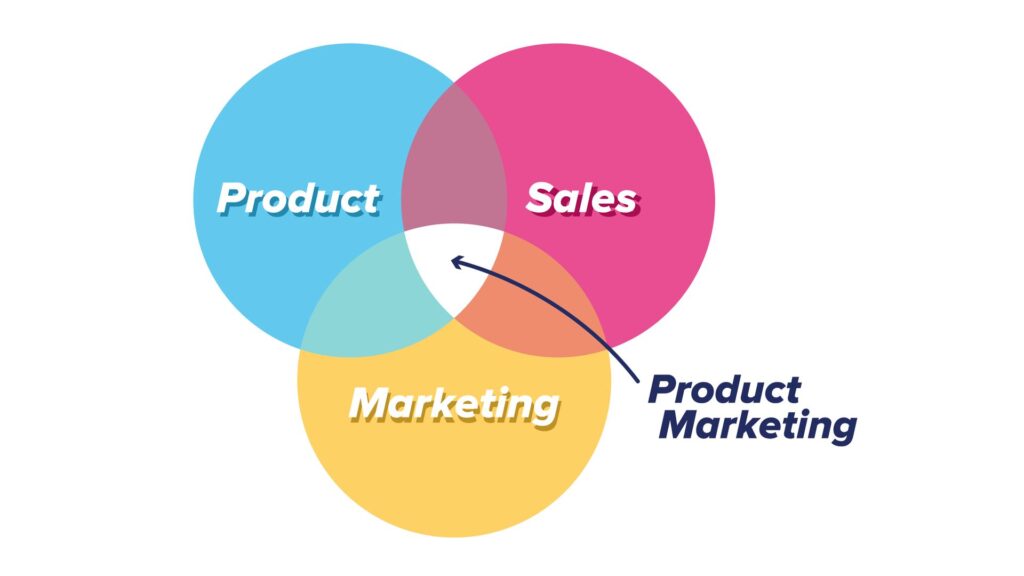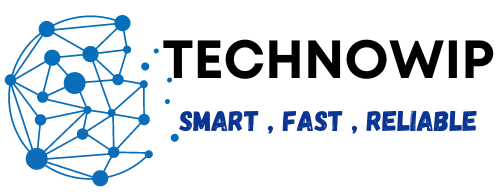Introduction
In today’s rapidly changing product production context, efficiency isn’t just the key to success, but it’s also a must. In the case of product managers managing team members from different functions, tight deadlines, and ever-changing requirements in the marketplace, having an organized workflow can be different from a highly successful product launch or an unrealized opportunity. Further in this post, we’ll look at the ways that AI Tools for Product Managers in staying organized and making informed decisions, and propel projects forward. The blog will provide concrete examples of their effectiveness.

Understanding the Problem
Product managers are often faced with an abundance of data, from feedback from customers to sprint updates. The process of sorting through the information in order to uncover actionable insight requires time. Time that can be used to help guide the company’s vision. The problem is exacerbated by the need to connect effectively with the stakeholders. When using manual processes, keeping this alignment could feel as if you’re chasing the wind, leading to inefficiencies, delays, and costly errors.
Agitation: The Strain of Traditional Processes
Based on my experiences, traditional methods of managing workflows for products felt as if you were building a bridge and trying to bridge it. Every gathering, each change, and every piece of paper had to be carefully checked and reviewed. In the end, I frequently found myself in a plethora of message threads and spreadsheets. It was tiring but also made me doubt if I’d forgotten the most crucial detail. A constant requirement for supervision by hand made it a challenge to concentrate on the strategic goals at the time, which is why I realized that a shift was necessary.
The Shift to AI-Driven Solutions
AI instruments address these pain problems by automating routine processes, looking at data on the scale of technology, and delivering sophisticated suggestions. Some applications make use of the process of natural language (NLP) to identify the most important themes in customer feedback and help product managers discern what’s most important for customers. Other platforms incorporate project management systems to identify bottlenecks and recommend an optimal allocation of resources. I
Case Study: A Practical Illustration
A mid-sized SaaS company is taken as the example of a product management team. They relied on weekly status meetings and writing manual reports to keep track of their progress. When they switched to an AI-driven platform for managing projects, they reduced 30% of the time they spent on administrative work. The AI tool automatically flagged unfinished projects, identified resource limitations, and suggested alternative timetables for sprints. The product manager was able to make educated decisions quickly, which resulted in a regular release time and improved quality of the product.
Personal Connection to AI Tools
However, after about a week, I saw fewer conflicts with scheduling as well as more effective group check-ins. The small tweak had a huge impact on the way I manage my time.
How AI Enhances Decision-Making
AI tools can also assist Product managers in making more informed decisions. ML algorithms are able to analyze historical project information to reveal the things that worked and failed. In the case of a specific feature that has consistently failed to meet the deadline or was delayed, an AI tool can reveal patterns such as an overestimated timeline for development or a lack of resources in teams. By analyzing these data, managers are able to adjust their plans to improve the efficiency of their teams and the results they achieve.
Another instance that is a part of me is the time I employed an AI analytics tool to analyze user behavior. It revealed a pattern I’d never seen previously: users often abandoning features at the end of the third. With this information, I was able to work with my team members to streamline the process. This resulted in a 20 percent growth in user adoption. If not for the AI-powered analysis, I may not be able to identify the issue this rapidly.
The Role of Collaboration Tools
AI is also a powerful tool for helping improve team communication. Software like chatbots with intelligent algorithms and AI-powered document search makes the process easier for members of the team to locate what they require and reduces the time spent sending messages and notifications of status. A few AI tools even provide live translations, which allow international teams to communicate more efficiently. Product managers can maintain a united team regardless of various time zones.
Personal Reflection on Collaboration Improvements
After my first experience with an AI-powered knowledge database, I was amazed by the speed at which I was able to locate relevant documents at group meetings. It was no longer a hassle to go through folders and emails–I asked the software for help and got all the data I required in minutes. The change did not just save time; it also ensured that meetings stayed in order and discussions focused.
Improving Customer Feedback Analysis
Collecting feedback from customers is one thing, but turning the feedback into useful insights is a different matter. AI tools are able to analyze huge volumes of qualitative data and identify recurring patterns, themes, or even new patterns. This ability helps product managers prioritize features that are most important for customers, resulting in greater satisfaction and a greater market-to-product match.
A Personal Perspective on Feedback Analyses
I’ve observed that using AI to study customers’ feedback has made an enormous difference. In one instance, the AI tool revealed a growing pattern of customers wanting an improved integration with a well-known CRM program. When we emphasized this aspect, we not only increased the quality of our products but noticed a 15 percent growth in the retention rate of our customers.
Trending searches :
1. AI-Powered User Feedback Analysis Tools:
Feedback from users is left via survey forms, support ticket reviews, or social media posts–analyzing the data manually is time-consuming and vulnerable to erroneous oversight. AI software uses the process of natural language (NLP) to detect the sentiment of users automatically, their complaints, and recurring requests for features. Product managers can quickly discern what areas require enhancement .
2. AI in Resource Allocation and Prioritization:
Allocating resources such as developer time as well as marketing and budgets–requires knowledge of where the most impact is likely to be. AI-powered platforms are able to analyze past data on projects as well as the current workload of teams and suggest the best way to allocate resources efficiently. They may suggest certain work be put off until more capacity becomes available or pinpoint those areas that are regularly either over or under-utilized.
3. AI-Based Competitive Analysis:
Through sifting through competitor’s public-facing announcements, updates to their products as well as price adjustments AI software can create detailed analyses of how a particular item is doing against the competition. Product managers can keep on top of new trends, predict competitor actions, and tweak their plan.
4. AI-Powered Scenario Planning:
If you’re planning product upgrades when planning product updates, it’s important to consider the different ways to take place. AI tools allow for the simulation of scenarios such as the way a price increase can affect users’ acceptance of a new feature, as well as how introducing a brand new feature could affect the churn rate. With the help of models, Product managers are able to make more educated decisions, minimize risk, and be prepared for a variety of marketplace conditions.
5. Integration of AI tools with existing platforms:
A critical question for product managers is the extent to which AI tools can be integrated into the tech stack that currently exists. For instance, the tool could integrate with Jira to obtain information about issues or Slack for information about projects in real-time. The main problem with these tools is that they use existing platforms and therefore reduce the need to work with the latest technologies.
6. Ethical AI Usage in Product Management:
As AI grows to become a bigger component of the product management workflow and processes, there is a need to consider the best way to utilize it responsibly. Concerns such as preventing bias from algorithms, ensuring privacy for customer data, and promoting transparency in the process of decision-making are at the top of the agenda. Product managers frequently search for top practices to learn how to implement AI effectively in a manner that is reliable, secure, and in line with the company’s ethics.

Conclusion
The complexity of managing products will never go away. However, the tools that we employ to tackle it are constantly evolving. AI-powered solutions can provide product managers with the insight and automated processes needed to improve their processes, enhance efficiency in decision-making, and boost collaboration.
These tools allow you to focus on what is most important: creating an experience that truly meets the demands of your customers. It doesn’t matter if it’s finding patterns in the behavior of users or streamlining your timetable; AI tools are more than just a convenient tool. They’re also an advantage in strategic planning. Making use of them will help you remain ahead in an increasingly competitive business environment that’s competitive, and help ensure your process is as effective and effective as it can be.
FAQS
1. What exactly are AI products for managers of products?
AI products for managers include software programs powered by artificial intelligence to improve workflows, analyze data, simplify repetitive tasks, and enhance decisions within the process creation process.
2. What can AI instruments help streamline workflows?
AI instruments reduce manual labor through the automation of repetitive tasks, the organization of data more effectively, and the provision of insights based on data. Product managers can focus on strategy, development, and creating value instead of being entangled in administrative tasks.
3. What does the Product manager employ the frequently used AI functions?
Common functions include automatic backlog prioritization and natural language processing to aid in the review of customer feedback resources allocation and predictive analytics to help with roadmaps and real-time support for collaboration.
4. Do AI instruments help analyze customers’ feedback?
Indeed, AI tools equipped with natural processing of language (NLP) are able to quickly sort through huge amounts of comments, discover common problems or themes as well, and provide actionable insight that guides improvements to the product.
5. Are these AI instruments easy to integrate into existing workflows?
A variety of AI software tools are built to work seamlessly with tools for managing projects, such as Jira, Asana, or Trello. These tools typically include API integrations, plug-ins, and user-friendly interfaces that ensure easy change.
6. What are the ways that AI tools aid Agile techniques?
AI tools aid agile teams in identifying the bottlenecks in their sprints, enhancing schedules, and providing instant information on progress. They can improve the planning of sprints and retrospective procedures by providing analytics based on data that increase overall team performance.
7. Can AI devices substitute for the requirement of human judgment?
The answer is no; AI tools are meant to improve human decision-making, not substitute it. They offer insights and advice and automate processes, yet product managers rely on their knowledge, experience, and skills as leaders in making final decisions.
8. What is the purpose of AI in forecasting and planning?
AI tools analyze past information, trends in the market, and the behavior of customers in order to give more accurate forecasts about the effectiveness of the features, release dates, and the future demands of customers, making it possible to create more precise and accurate plans for the future.
9. Are there any considerations regarding the cost of implementing AI instruments?
The price of AI tools can vary widely depending on the features they offer, their scale, and the degree of personalization. While certain AI platforms are fairly affordable, however, those with more advanced capabilities could require an expenditure. The company should evaluate the benefits against the expense to find which one is best suited to the needs of its business.
10. What are the primary advantages of utilizing AI instruments in managing products?
The primary benefits are improved efficiency, speedier decisions, better resource allocation, better forecasts, and an increased emphasis on strategic actions. By reducing the complexity of workflows, AI tools can help the product manager create better products with greater efficiency.
